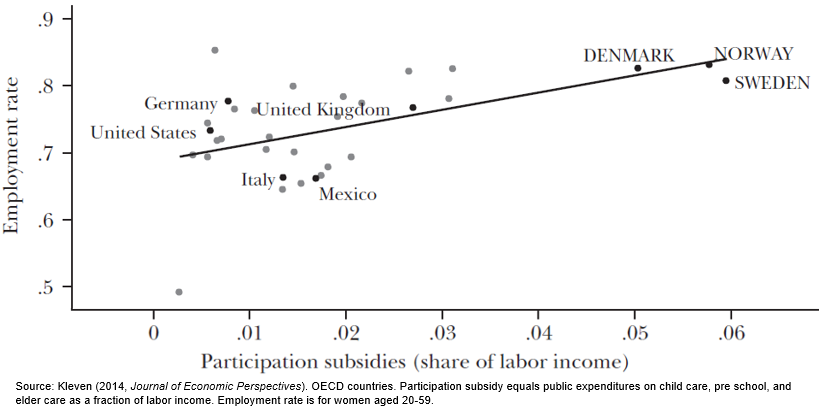1/ Can big public investments in caregiving raise U.S. employment? Big uncertainty but available evidence is consistent with seven-digit employment effects:
2/ Basic logic: When caregiving investments ease the burden of child and elder care, more working-age adults take up formal employment.
3/ Across countries: The more a country invests in caregiving, the more adults have jobs -- driven by women.
4/ So e.g. if caregiving investments explain >20% of the U.S.-Scandinavia employment difference, then those investments would raise U.S. employment by >2m (=1.2% of projected 2024 employment).
5/ Blau-Kahn’s '13 country-fixed-effect results suggest the causal cross-country share is much larger than 20%. Smaller but still large effects from Norwegian childcare, excluding elder care (Havnes-Mogstad ‘11 JPubE).
6/ U.S. estimates: Bivens et al. ‘16 uses Blau’s ‘03 & Blau-Kahn’s ‘13 elasticities (also used by National Academies ‘19) to estimate 2m employment impact of a 10% childcare expenses cap.
7/ See also: Ruhm ‘98, Anderson-Levine ‘00, Gelbach ‘02, Jaumotte ‘03, Chevalier-Viitanen ‘02, Baker-Gruber-Milligan ‘08, Havnes-Mogstad ‘11AEJ/’15, Rossin-Slater-Ruhm-Waldfogel ‘13, VanHoutven-Coe-Skira ‘13, Fahle-McGarry ‘17, Truskinovsky-Maestas ‘18.
8/ Welfare analysis requires considering value, spillovers, care substitution, population targeting, and government budget effects (Baker-Gruber-Milligan ‘08, Havnes-Mogstad ‘11JPubE/‘15, Hendren ‘16, Kline-Walters ‘16).

 Read on Twitter
Read on Twitter


